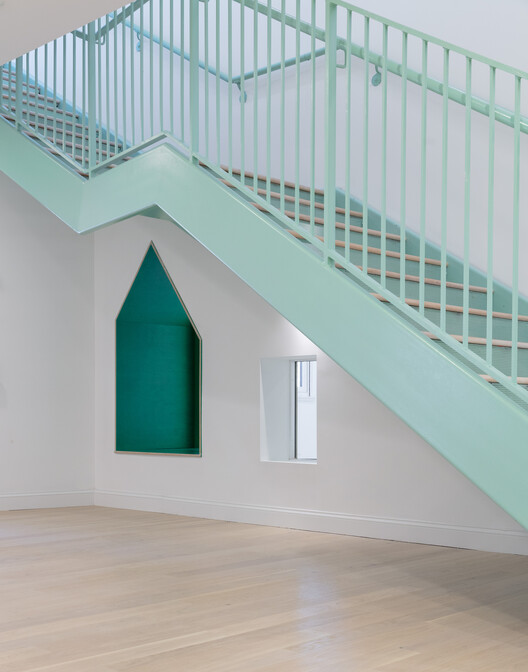
In Greater Boston's city of Malden, Massachusetts, an inter-generational community of thirty households hired an architecture firm and collectively designed their cohousing community. Responding to the cohousing community's request for collective living in an urban setting, French2D designed a typology-challenging building with individual residential units connected by a framework of shared spaces. The result is a 48,700 sqft unique and colorful type of multi-family housing. It is one of a growing number of cohousing projects in the United States.
The cohousing model in North America responds to two significant issues. First, Millennials face increased hurdles of home ownership due to the rising cost of housing, making it more challenging for young adults to purchase a house than older generations. Second, Americans are lonely, with the highest rates of loneliness reported among young adults in lower-income households. Amongst other factors, this loneliness can be attributed to a lack of third places such as cafes, parks, and other places of socialization and serendipitous encounters.

Unlike co-living units, cohousing is not an entirely shared residential facility. Cohousing models are collaborative neighborhoods that combine private home ownership with shared indoor and outdoor spaces. While not unusual in their ownership structure as they essentially function as condominium associations, the shared values of fostering shared experiences and mutual support make them an interesting social phenomenon. In this type of organization, residents participate early in the design process. They organize with a vision in mind, adopt a decision-making consensus, purchase land, and develop.
When French2d designed Bay State Cohousing, they took on designing collectively with a community of thirty households. They partook in choosing a site based on feedback from the cohousing community, landing them in an urban location close to public transportation. For the design, they hosted workshops with groups of thirty to fifty people, listening to their different perspectives and nailing down the community's priorities. This process allowed them to be uber-specific when it came to resident needs, with future residents pitching in on the layout of the units and the core values shaping the shared spaces.

This project tasked the architects with making sense of a large amount of input and producing a cohesive whole. They intertwined the scale of the residential unit with the large-scale common areas in a way that felt intimate rather than institutional. The housing units vary in size, with thirty units ranging from studios to three bedrooms. The centerpiece of the building is a large dining room connected to a shared kitchen, a shared living area, and a central outdoor patio. Other common spaces in the building include a craft workshop, a yoga room, and a pantry. The housing complex uses a bright and cheerful color palette of bright greens, light pink, and yellow, reflecting the community's wishes not to look too serious.


The project was not without challenges, including dealing with NIMBY sentiments and zoning restrictions. These created setbacks that ended up creating a new cohousing zoning ordinance in the city of Malden. French2D worked the large scale of the cohousing building into the residential scale of the neighborhood by giving it a vernacular touch, compositionally making the facade look like the addition of a series of row houses.


While most cohousing projects in the United States are composed of standard houses around a common facility, there is still much to be explored regarding more dense types of cohousing in urban areas, similar to Bay State Cohousing. Cities can make the move to these new housing types easier by dismantling single-family zoning codes, giving people with different budgets and living arrangements the chance to have spaces that better fit their needs—creating homes for evolving definitions of households and communities.











